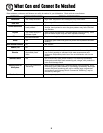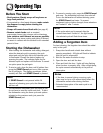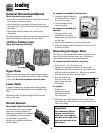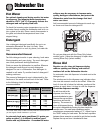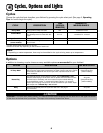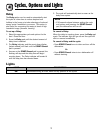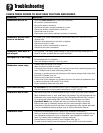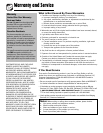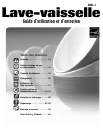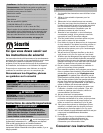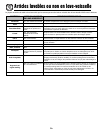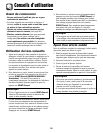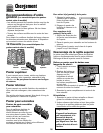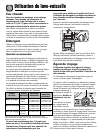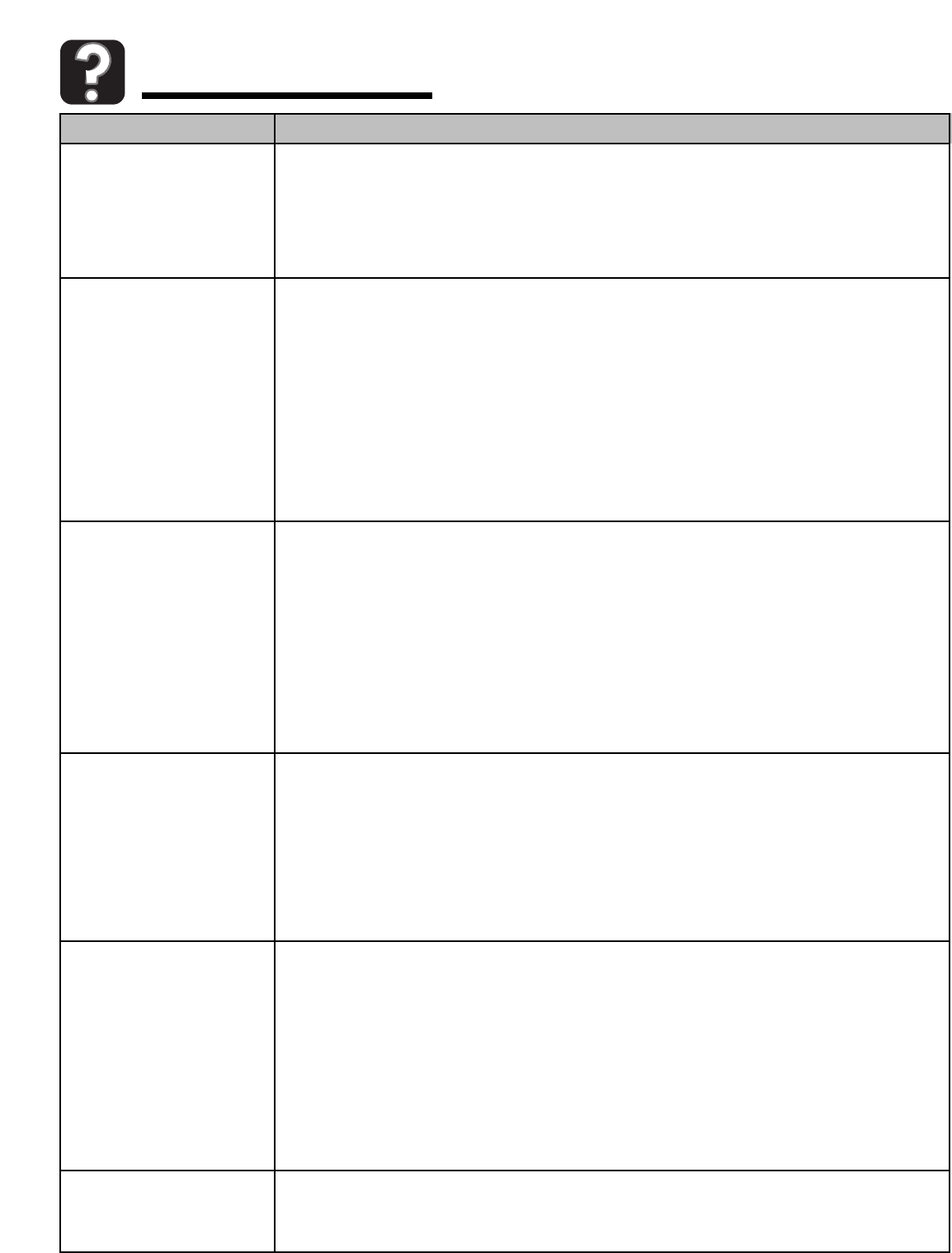
Indicator lights flashing
Food soil remains
on dishes
Items washed in the
dishw
asher or the
dishwasher tub itself
are stained/ discolored
10
*Brand names are trademarks of the respective manufacturer.
Troubleshooting
SOLUTION
•
The countdown display (select models) flashes after a cycle is selected until the
S
TART/Cancel
p
ad is pressed.
• The countdown display (select models) and the delay indicator flash after a delay is selected
u
ntil the
S
TART/Cancel
p
ad is pressed.
• All active display indicators flash if the door is opened during a running cycle or delay.
• The currently selected cycle flashes if an attempt is made to change the cycle after cycle
“lock-in”.
• Select
Hi Temp Wash option.
• Check water temperature. Incoming water should be 120° F (49° C).
• Always use a rinse aid.
• Confirm that the cloudiness is removable by soaking the item in white vinegar for
approximately 5 minutes. If removed, the problem is due to hard water. Adjust detergent
amount being used to match water hardness (pg. 5). Be sure detergent is fresh, stored
properly and is a high quality brand.
• If cloudiness is not removable, it is etching. This is an erosion of the surface of the
glassware and can be caused by water that is too hot, from using too much detergent or by
prewashing. Detergent needs food soil to act upon. If etching has occurred, the glassware
is permanently damaged. To prevent further etching, adjust the detergent amount to match
the water hardne
ss, stop prewashing, and use water heating options only when incoming
water temperature is below 120° F (49° C).
• Check water temperature. Incoming water should be 120° F (49° C).
• Run hot water at the sink before starting the dishwasher.
• Check water hardness and adjust detergent amount accordingly (pg. 5).
• Use fresh detergent stored in a cool dry place.
• Select proper cycle for the soil level and
Hi Temp Wash (select models) (pg. 6).
• Make sure the upper rack wash arm connector is correctly aligned in one of the water inlet
holes (pg. 4).
• Load items so they do not block the wash arms (pg. 4).
• Load the utensil basket with knife handles up and spoon and fork handles down.
• Do not place glasses over tines.
• Before loading, scrape off burnt on foods and wipe the starchy film from utensils used with
pasta, rice and oatmeal. These soils require more energy than the rest of the load to clean.
• Aluminum utensils or pans can leave marks when they rub against other items. Leave a
slight space between items.
• Iron deposits in the water can leave a yellow, brown or orange film on dishes or the
dishwasher tub. A rust filter may be needed. Check with a water treatment company.
•
Separate silver or silver-plated silverware from stainless steel. These metals can be
damaged by contact with each other during washing.
•
Color from tomato sauces may adhere to the interior parts of the dishwasher (pg. 8). If light
staining has occurred, leave the door open to oxidize the stain away. Use a dishwasher
detergent that contains chlorine to better fight staining.
• Certain dishwasher detergents may stain silver. Try another brand of detergent.
• Be sure
Heated Dry is selected.
• Water droplets may form on the inner door as part of the drying process.
• Use a rinse aid separate from the detergent like Jet Dry* or Cascade Rinse Aid* regularly, to
improve drying. T
urn the rinse aid selector toward the M
AX setting.
• Check water temperature. Incoming water should be 120° F (49° C).
•
Select
Hi T
emp W
ash
option.
• Increase detergent amount to match water hardness (pg. 5).
•
L
oad properly
. (pg. 4)
• Plastic and items with non-stick surfaces are difficult to dry because they have a porous
surface which tends to collect water droplets. Towel drying may be necessary.
• Glasses and cups with concave bottoms hold water and require towel drying. Locate these
items on the more slanted side of the rack for improved re
sults.
• Load dishes according to instructions so they do not strike each other (pg. 4).
• Washing fine antique china/crystal in the dishwasher is not recommended.
• Do not load glasses over the tines.
• Do not overload.
Dishware is chipped
PROBLEM
Items not properly
dried/moisture is
pr
esent on the
dishwasher interior
after the dry cycle
Glasses are cloudy/
spotted



